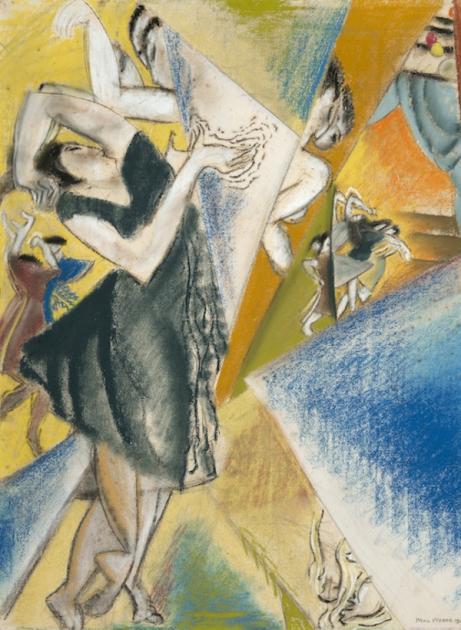A new exhibition exploring the work of the American Cubist painter Max Weber is to open at the Ben Uri Collection in June. Although widely-known in the US, this exhibition will for the first time examine the Russian-American artist’s influence in a European context, particularly his crucial role in the cross-cultural dialogue between Paris and London. The exhibition draws on a little-known collection of 14 innovative Weber paintings, c. 1909-14, from the University of Reading, never previously exhibited in its entirety. It explores Weber’s formative years in Paris, studying under Henri Matisse and befriending Henri ‘Le Douanier’ Rousseau, and goes on to examine how Weber’s work was disseminated among and influenced the British avant-garde. It will also include work by his peers: American emigre photographer Alvin Langdon Coburn, and painters Vanessa Bell, Frederick Etchells, Roger Fry, Duncan Grant, CRW Nevinson and Wyndham Lewis.
Max Weber was an American artist of Jewish decent, considered to be one of the pioneers of modernism in America. He was born on April 18, 1881, in Bialystok, Russia (now Poland), to an orthodox Jewish family. His family immigrated to Brooklyn, New York in 1891. From 1898 to 1900, Weber was enrolled at the Pratt Institute in Brooklyn. There he studied under Arthur Wesley Dow, noted painter and printmaker, who taught him to see forms as visual relationships rather than objects. From 1901 to 1905, Weber taught art at public schools in Lynchburg, Virginia and Duluth, Minnesota.
In September 1905, Weber moved to Paris and studied at the Académie Julian under Jean Paul Laurens, the Académie Colarossi, and the Académie de la Grande Chaumière. In 1908, he participated in a small class at Matisse’s newly opened academy. While in Paris, Weber frequented the Paris Salon retrospectives of Cézanne and Gauguin (both in 1907) as well as the studios of Matisse and Picasso. He also visited Gertrude Stein’s salon and was a close friend of Henri Rousseau. During this time, Weber was greatly influenced by Cubist artists Pablo Picasso and George Braque and his work was exhibited in the Salon des Indépendants and the Salon d’Automne.
Weber returned to New York in 1909, bringing to America a knowledge of European modernist developments, including its dynamism, abstraction, and emotion. For a short period, Alfred Stieglitz, whose Gallery 291 promoted European and American modernism, supported Weber. As an influential member of the Stieglitz group, Weber became one of America’s first important modernist artists. He was also one of the first American artists to focus on the Indians of the American Southwest. In 1913, Weber’s one-man exhibition at the Newark Museum was the first modernist exhibition at an American museum. He died in 1961.
24 Jun – 5 Oct 2014 Benuri Gallery London

